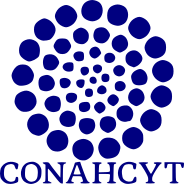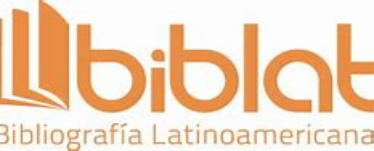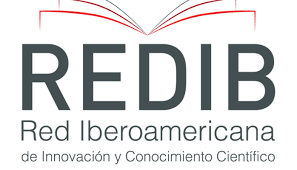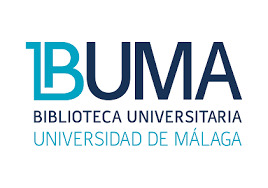Knowledge and phytotherapic practices in the City of Salta, Argentina
Keywords:
Phytotherapy, Salta, health centers, botanical knowledge, therapeutic practicesAbstract
In urban centres, around 70% of the population acquire medicinal plants and choose them to treat their ailments. Public health systems have to evaluate how the use of traditional and complementary medicine can improve the population's health, mainly in developing countries. This research was carried out in Salta City and the objectives were: 1) to know the plants used in urban herbal medicine; 2) inquire about the reasons for the consumption of medicinal plants, ailments, conditions and therapeutic practices; 3) to know the cultural importance of plants through the Relative Importance Indices (IR), the Consensus Factor among the informants (FCI) and the origin of the linked knowledge; 4) describe the spaces for plant acquisition; 5) to know the perception of health personnel of formal medicine about the use of medicinal plants in the domestic environment and 6) to compare the diseases treated with herbal medicine and those with formal medicine. Through the quantitative ethnobotanical methodology, 35 participants residing in four neighbourhoods were interviewed and focus groups were held with health personnel from three health centres located in the northern sector of the city linked to the mentioned neighbourhoods. One hundred twenty medicinal taxa belonging to 110 genera and 52 botanical families were registered; 63% of the taxa are non-native plants. The most represented families were Asteraceae and Lamiaceae. Forty five percent are grown in gardens, patios and home gardens. The Salta inhabitants are distinguished by having a hybrid and dynamic botanical knowledge through the registration of 63 medicinal uses that involve 14 body systems. Among the health personnel, an importat heterogeneity of feelings and knowledge was noticed, highlighting the recognition of the use of plants by the related population; the lack of quantifiable scientific evidence on the benefits of its practice; the fear of adverse effects and the lack of formal knowledge about phytotherapy. Research on phytotherapy should be deepened, and study, the processes of diversification and redefinition of knowledge and practices on medicinal plants.
References
Alonso, J., & Desmarchelier, C. (2015). Plantas Medicinales Autóctonas de la Argentina Bases Científicas para su Aplicación en Atención Primaria de la salud.
Arenas, P. (2012). Etnobotánica en zonas áridas y semiáridas del Cono Sur de Sudamérica (P. Arenas, Ed.; CEFYBO-CONICET).
Arenas, P. M. (2007). Suplementos dietéticos: estudio etnobotánico en zonas urbanas. Kurtziana, 33(1), 193-202.
Arenas, P. M., Doumecq, B., Puentes, J. P., & Hurrell, J. (2015). Algas y plantas comercializadas como adelgazantes en el àrea metropolitana de Buenos Aires, Argentina. Gaia Scientia, 9(3), 32-40.
Avello, M. L., & Cisternas, I. (2010). Fitoterapia, sus orígenes, características y situación en Chile. Rev Med Chile, 138, 1288-1293.
Barboza, G. E., Cantero, J. J., Núñez, C., Pacciaroni, A., Ariza Espinar, L., Barboza, R., Cantero, J. J., Núñez, C., Pacciaroni, A., & Ariza, L. (2009). Medicinal plants: A general review and a phytochemical and ethnopharmacological screening of the native Argentine Flora. Kurtziana, 34(2).
Bennett, B. C., & Prance, G. T. (2000). Introduced plants in the indigenous pharmacopoeia of northern South America. Economic Botany, 54(1), 90-102. https://doi.org/10.1007/BF02866603
Bodeker, G., & Kronenberg, F. (2002). A public Health Agendafor Traditional, Complementary and Alternative Medicine. Public Health Matters, 92, 1582-1593.
Cañigueral, S., Dellacassa, E., & Bandoni, A. L. (2003). Plantas Medicinales y Fitoterapia: ¿Indicadores de Dependencia o Factores de Desarrollo? Acta Farm. Bonaerense, 22(3), 265-278.
Cañigueral, S., & Vila, R. (2005). Phytotherapy as therapeutic tool Equibiotics: a new type of plant drugs equilibrating microbiota View project Comprehensive HPTLC fingerprinting in quality control of herbals View project. Ginecología y Obstetricia Clínica, 6(1), 43-51. https://www.researchgate.net/publication/289103454
Cruz, S. M. (2016). Medicina tradicional y fitoterapia una alternativa para el mejoramiento de la salud en Guatemala Ensayo Científico / Scientific Essay. Tecnología y Salud, 3(1).
Cuassolo, F., Ladio, A., & Ezcurra, C. (2010). Aspectos de la comercialización y control de calidad de las plantas medicinales más vendidas en una comunidad urbana del NO de la Patagonia Argentina. Boletín Latinoamericano y del Caribe de Plantas Medicinales y Aromáticas, 9, núm. 3, 165-176. http://www.redalyc.org/articulo.oa?id=85615232003
Fabbroni, M., Flores, C. B., Guzmán Ayarde, M. F., & Robbiati, F. O. (2022). Usos tradicionales de las plantas medicinales en los Valles Calchaquíes, Salta, Argentina. Bol. Soc. Argent. Bot., 57(3), 1-34.
Gaiero, D. M., Simonella, L., Gassó, S., Gili, S., Stein, A. F., Sosa, P., Becchio, R., Arce, J., & Marelli, H. (2013). Ground/satellite observations and atmospheric modeling of dust storms originating in the high Puna-Altiplano deserts (South America): Implications for the interpretation of paleo-climatic archives. Journal of Geophysical Research: Atmospheres, 118(9), 3817-3831. https://doi.org/10.1002/jgrd.50036
Gobierno de la Republica Argentina. (2000, agosto 5). Especialidades medicinales, Medicamentos Fitoterapicos - Drogas Vegetales. Adm. Nac .de Medicamentos, Alimentos y Tec. Medica.
Granovetter, M. (1976). Network Sampling: Some First Steps’. The American Journal of Sociology, 81(6), 1287-1303.
Hamilton, C. A. (2004). Medicinal plants, conservation and livelihoods. Biodiversity and Conservation, 13, 1477-1517. https://www.researchgate.net/publication/259693499
Hidrobo Unda, H. D. (2020). Equidad en Salud y Territorio: Experiencias de trabajo en red desde un Hospital Público en Salta, Argentina. [Maestria en Desarrollo Humano]. FLACSO Argentina.
Hilgert, N. I., Higuera, M. de L., & Kristensen, M. J. (2010). La medicina herbolaria en el contexto urbano. Estudio de caso en un barrio de la ciudad de Tandil, Argentina. Boletín Latinoamericano y del Caribe de Plantas Medicinales y Aromáticas, 9, núm. 3, 177-190. http://www.redalyc.org/articulo.oa?id=85615232003
Hurrell, J. A., Pochettino, M. L., Puentes, J., & Arenas, P. M. (2013). Del marco tradicional al escenario urbano: Plantas ancestrales devenidas suplementos dietéticos en la conurbación Buenos Aires-La Plata, Argentina. Boletín Latinoamericano y del Caribe de Plantas Medicinales y Aromáticas, 12, núm. 5, 499-515. www.blacpma.usach.cl
Hurrell, J. A., & Pochettino, M. L. (2014). Urban Ethnobotany: Theoretical and Methodological Contributions. En U. P. Albuquerque, L. V. F. Cruz da Cunha, R. F. P. de Lucena, & R. R. N. Alves (Eds.), Methods and Techniques in Ethnobiology and Ethnoecology (pp. 293-309). Springer New York. https://doi.org/10.1007/978-1-4614-8636-7
Idoyaga Molina, A. (2001). Etiologías, síntomas y eficacia terapéutica. El proceso diagnóstico de la enfermedad en el Noroeste Argentino y Cuyo. Centro Argentino de Etnología Americana, 16(1), 9-43.
Instituto Nacional de Estadística y Censos (INDEC). (2023, agosto 2). Censo Nacional de Población, Hogares y Viviendas 2022. Censo Nacional de Población, Hogares y Viviendas 2022. Resultados provisionales.
Luján, M. C., & Barboza, G. E. (2008). Control de calidad botánico e higiénico-sanitario de muestras comerciales usadas como droga cruda en Argentina. Arnaldoa, 15(1), 109-125.
Luján, M. C., & Martínez, G. J. (2019). Etnobotánica médica urbana y periurbana de la ciudad de Córdoba (Argentina). Boletín Latinoamericano y del Caribe de Plantas Medicinales y Aromáticas, 18(2), 155-196. www.blacpma.usach.cl
Martínez, G., & Planchuelo, A. M. (2003). Medicina tradicional en criollos campesinos en Córdoba. Scripta Ethnologica, 83-116.
Medeiros, P., Ramos, U., Alves, M., De Albuquerque, P., Farias, R., Muniz De Medeiros, P., Santos De Almeida, A. L., & De Lucena, P. (2008). The role of visual stimuli in ethnobotanical surveys: An overview Human as niche constructors View project The role of visual stimuli in ethnobotanical surveys: An overview. Research Signpost, 37(2), 126-137. https://doi.org/10.13140/RG.2.1.2099.2726
Ministerio de Salud Pública. (2018, agosto 7). Aprueba definición geográfica, sectorización del programa de atención primaria y centros de salud dependientes del área Operativa IV zona sur. Aprueba estructura orgánica. Gobierno de la Provincia de Salta.
Molinelli, M. L., Perissé, P., Fuentes, E., & Planchuelo, A. M. (2014). Calidad botánica de drogas crudas comercializadas como “canchalagua” en Córdoba, Argentina. Bol. Soc. Argent. Bot., 49(2), 293-316.
Municipalidad de Salta. (2021, agosto 12). Barrios de Salta: mapa interactivo de cada area de la Ciudad de Salta. Gobierno de la Ciudad de Salta.
Mutti, O. A. (2002). Intoxicación por plantas de la Medicina Popular. Enfoque multidisciplinario. Farmacoterapéutica y Toxicología. , 9, 16-22.
Nalawade, S. M., Sagare, A. P., Lee, C.-Y., Kao, C.-L., & Tsay, H.-S. (2003). Studies on tissue culture of Chinese medicinal plant resources in Taiwan and their sustainable utilization. Bot. Bull. Acad. Si., 44, 79-98.
Oblitas, G., Hernández-Córdova, G., Chiclla, A., Antich-Barrientos, M., Corihuamán-Cusitito, L., Romaní, F., & Breve, O. (2013). Empleo de plantas medicinales en usuarios de dos hospitales referenciales del Cusco, Perú. Rev. Perú Med. Exp. Salud Pública, 30(1), 64-68.
Oliva, V. (2016). Usos y costumbres sobre hierbas medicinales en barrios periurbanos del sudeste de la ciudad de Salta, Argentina. Archivos de Medicina Familia y General, 13(1), 18-26.
Organización Mundial de la Salud (OMS). (1993). Directrices sobre conservación de plantas medicinales. IUCN.
Organización Mundial de la Salud. (2013). Estrategia de la OMS sobre medicina tradicional 2014-2023. Organización Mundial de la Salud.
Oyarzabal, M., Clavijo, J., Oakley, L., Biganzoli, F., Tognetti, P., Barberis, I., Maturo, H., Aragon, R., Campanello, P., Prado, D., Oesterheld Martin, & Leon Rolando. (2018). Unidades de vegetación de la Argentina. Ecología Austral, 28, 40-63.
Pérez Cuadra, V., Turano, F. A., & Cambi, V. N. (2010). Plantas medicinales y ornamentales tóxicas. Revista de la Asociación Médica de Bahía Blanca, 20(3), 67-70.
Pochettino, M. L., Arenas, P., Sánchez, D., & Correa, D. (2008). Conocimiento botánico tradicional, circulación comercial y consumo de plantas medicinales en un área urbana de Argentina. Plantas Medicinales y Aro Boletín Latinoamericano y del Caribe de Plantas Medicinales y Aromáticas, 7(3), 141-148. http://www.redalyc.org/articulo.oa?id=85670304
Portugal Ramírez, M. (2017). Interculturalidad en salud. Palobra, 17, 278-295.
Puentes, J. P., Arenas, P. M., & Hurrell, J. A. (2020). Lamiaceae medicinales y aromáticas comercializadas en el Área Metropolitana de Buenos Aires, Argentina. Bonplandia, 29(1), 5-20. https://doi.org/10.30972/BON.2914106
Rodríguez Echazú, S., Oliva, V., Peduzzi, M., & Sanz Aguilar Peduzzi, O. (2019). Plantas que hablan, Plantas que curan. Estudio etnobotánico y aportes al conocimiento de la salud del departamento La Poma (Provincia de Salta, Argentina) (Fondo Editorial Secretaría de Cultura de la Provincia de Salta, Ed.; Primera).
Sciortino, J., & Ramos Vernieri, F. (2018). Análisis de la variación temporal de lluvias en la Ciudad de Salta. XXVIII Congreso Latinoamericano de Hidráulica, 1-2.
Silva Lima, S. C., Arruda, O. G., Dias Renovato, R., & Martins Alvarenga, M. R. (2012). Representaciones y usos de las plantas medicinales en mayores. Rev. Latino-Am. Enfermagem, 20(4), 3-7. www.eerp.usp.br/rlae
Trotter, R. y L. M. (1986). Informant consensus: a new approach for identifying potentially effective medicinal plants. In: Etkin, N. L. (ed.). Plants in indigenous medicine and diet: Bio behavioral approaches. Redgrave Publishers, 91-112.
Turano, F. A., Cambi, V. N., & Viviana Cambi, D. (2009). Plantas medicinales: Mitos y verdades sobre una fuente natural de Recursos Terapéuticos. Revista de la Asociación Médica de Bahía Blanca, 19(4), 115-119.
WFO. (2023, agosto 6). World Flora Online. Publicación on line.
Zuloaga, F., & Anton, A. (2023, agosto 4). Flora Argentina on line. IBODA-IMVIB .
Zuloaga, F., Morrone, O., & Rodríguez, D. (1999). Análisis de la biodiversidad en plantas vasculares de la Argentina. Kurtziana, 27(1), 17-167.
Downloads
Published
Issue
Section
License

Polibotánica by Departamento de Botánica de la Escuela Nacional de Ciencias Biológicas del Instituto Politécnico Nacional se distribuye bajo una Licencia Creative Commons Atribución-NoComercial-CompartirIgual 4.0 Internacional.



















